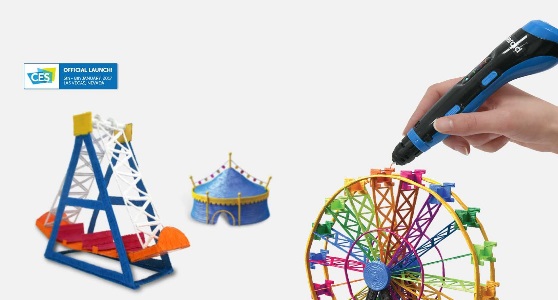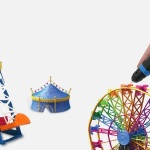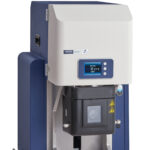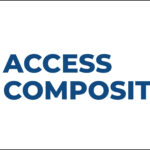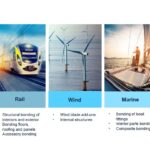At CES 2017, the company introduced three compact 3D printer models and two 3D printing pens, and announced that its line of filament kits would soon go on sale. Polaroid recently released its newest offering in the UK: the Polaroid Play 3D Pen, which is being marketed as an “easy-to-use creative tool for leisure use.”
The Polaroid Play 3D Pen offers colorful 3D creativity, as users can build their own freehand 3D models with the included four reels of filament; if that’s not enough, you can also purchase a separate box of 20 different filament colors. The pen also includes a holder, a 1 x 1.5 m USB cable, a Quick Start Guide, and four adhesive pads, along with a Screen Protector for the pen’s Trace App.
The Trace App looks really neat: it allows you to stencil your own photographs, and then bring them into glorious, 3D life. Just click the “Stencilize” button in the app to easily copy a photo, or trace imported templates and assemble those into 3D models.
Recommended for ages 14 and up, the Polaroid Play uses eco-friendly plastic filament, which will be automatically retracted, to prevent blockages, if the pen is inactive for ten minutes; for added safety, the pen also features an automatic shutoff. The filament input is located right next to the power socket at the bottom of the pen, and the power, speed control, and print buttons are all on the side. Users have a choice between manual or automatic extrusion, and there are multiple print speed settings. The pen will be available throughout the European market with an RRP of £29.99
The Polaroid Play 3D pen is now available for purchase on Crave3D, and the company collaborated with longtime European 3D partner Environmental Business Products (EBP), the largest European collector and re-manufacturer of inkjet cartridges, to unveil the pen.
In addition to offering the Polaroid Play 3D pen, EBP has also launched ten new Polaroid Universal Filament Materials, which can be used with any suitable FFF or FDM 3D printers, and come in a range of 40 colors, including composite materials like carbon fiber, copper, and elastic. The materials can be used with another Polaroid product introduced at CES 2017, the Polaroid Precise Filament Holder & Scale. The filament holder measures filament weight and length, and lets users know exactly how much material is left, which solves a current challenge for 3D printer users that don’t have a way to measure this information.
The battery-operated holder has an easy-to-use scale function, and will automatically turn off after two minutes of inactivity.
